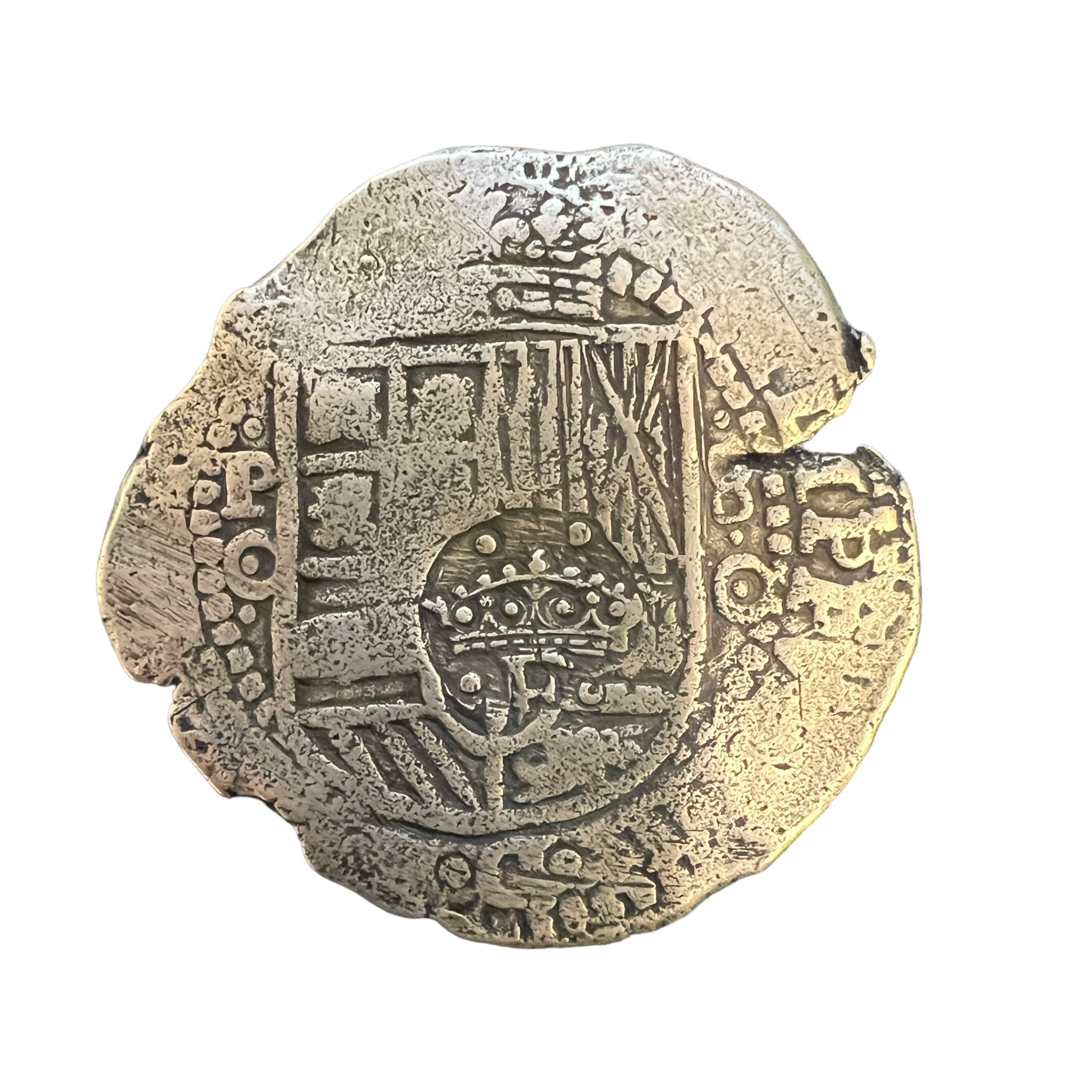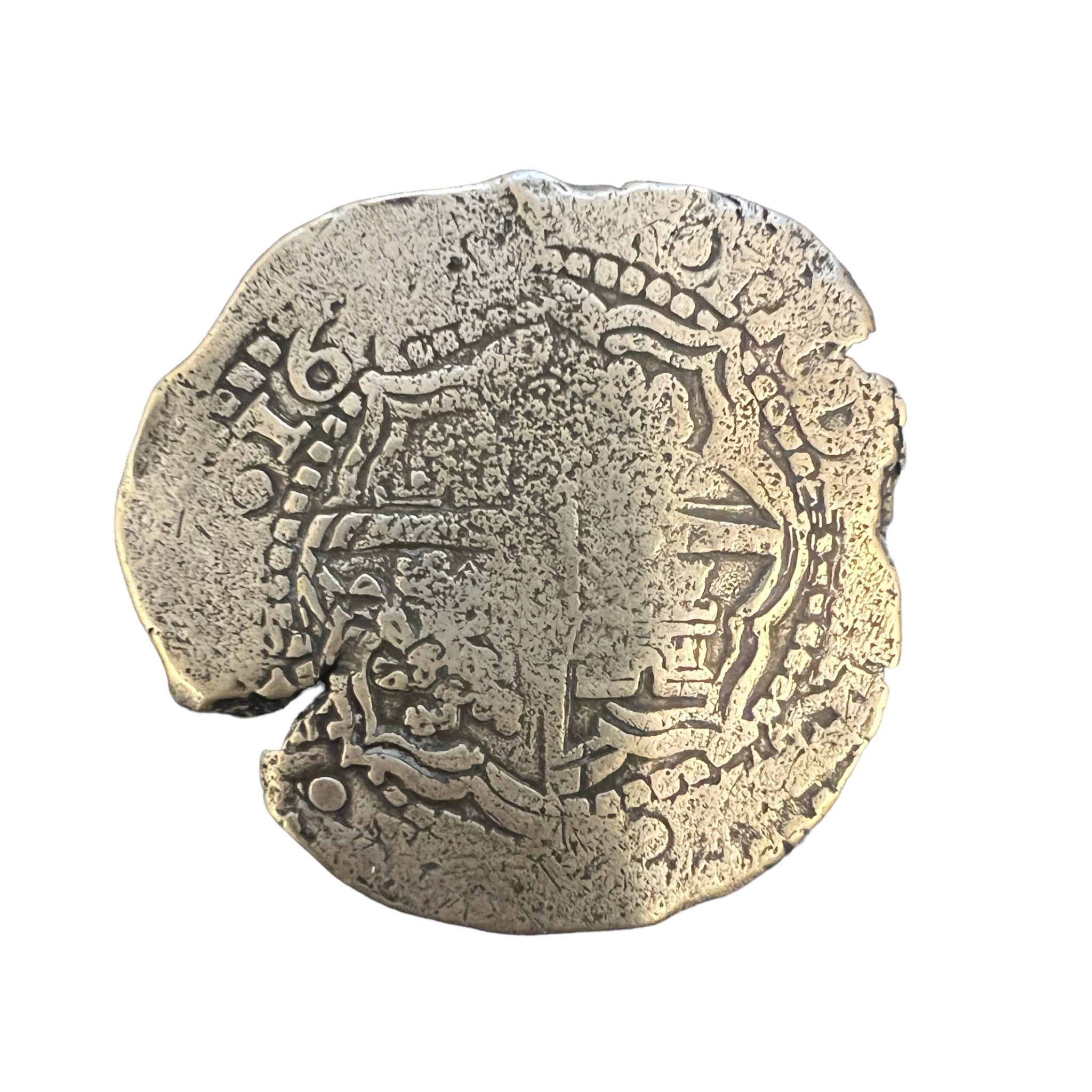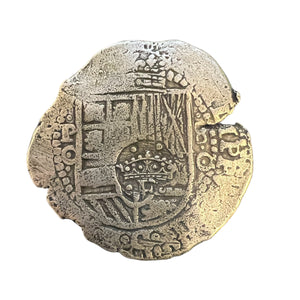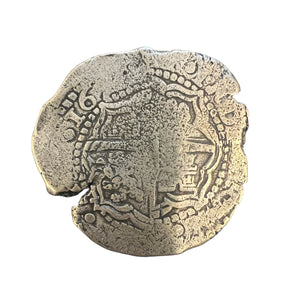La Capitana Shipwreck - Potosi mint scandal coin - 8 (7 1/2) Reales - Dated 16XX
$3,020
Denomination: 8 Reales (7 1/2)
Weight: 26.89 gm
Date: 16XX
Mint: Potosi
Assayer: "O" Rosa “the wheel”
Grade: XF
Description: Philip IV " La Capitana" Cob. Counter stamped “F”. This counter stamp has a C1 rating on the rarity scale. C1 was somewhat common. (Saltwater Effect). Obverse: Bold strike on Greek Cross side. Partial date of 16XX visible. Reverse: Clear and bold strike on the Hapsburg Shield side. Crow marked with a crown over “F”. the mint mark, Assayer, denomination “8”, are all clearly visible. A solid survivor from the Potosi Scandal, showing a good stamp, clear host features and a good weight.
History: The wreck of the Capitana, or the lead ship of the Spanish South Seas.
(Pacific) Fleet, would become the largest loss ever experienced by the Spanish armada. After striking the Punta Santa Elena reefs, The Jesus María de la Limpia Concepción lost a reported 3,000,000 pesos of silver, extended to a total of approximately 10 million pesos when considering the un-recorded contraband and treasure aboard. Sadly, due to the unregistered cargo that was stored atop the anchor cables and foredeck, the crew was unable to use the anchors for safe stoppage. For context, the entire annual silver production in Peru was around 6-7 million pesos, suggesting that the Concepción was carrying almost one and a half years of peso production. For eight years after the wreck, the Spanish managed to salvage a vast majority of the lost 'official' 3 million pesos and would later recover even more coins, causing a scandal due to the mismatch of monetary records. Ironically, and sadly, the main salvager of the wreck was the Concepción's silver master, Bernardo de Campos, who is blamed for the overload of unregistered contraband that contributed to the ship's tragedy. The lowest deck would be unreachable until modern divers and salvaging equipment were used during the mid-1990s. After equally splitting the recovered coins with the Ecuadorian government in 1998, officially around 2,500 coins would appear at auction in 1999. These were almost exclusively Potosí 8 and 4 Reales that were in excellent condition, including countermarked issues (1649-1652), transitional issues of 1652, and post-transitional pillars-and-waves cobs (1653-1654).




